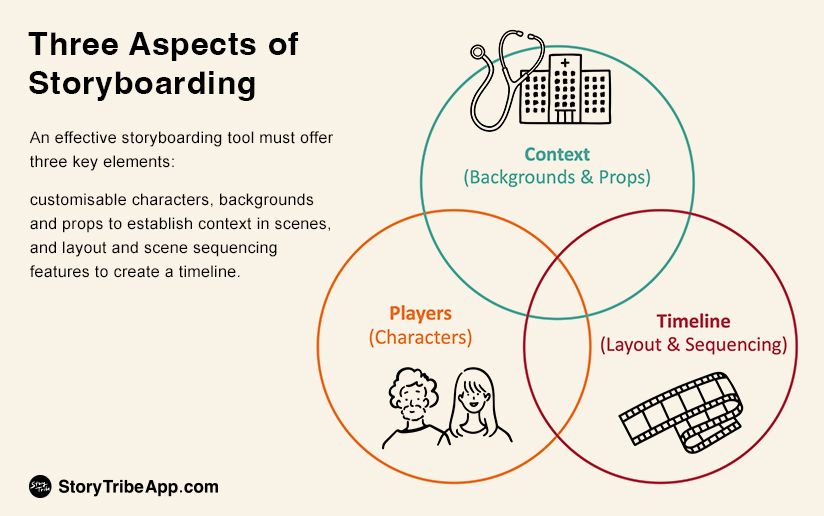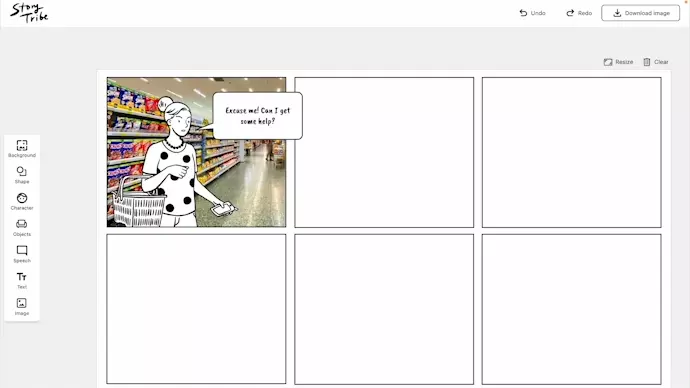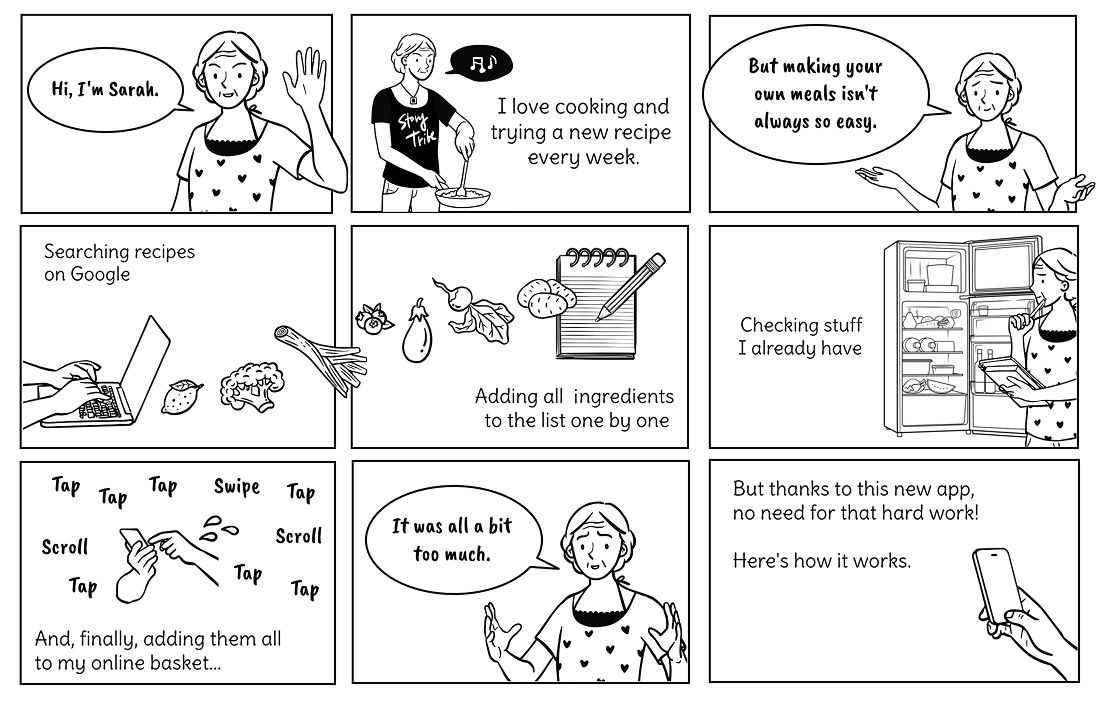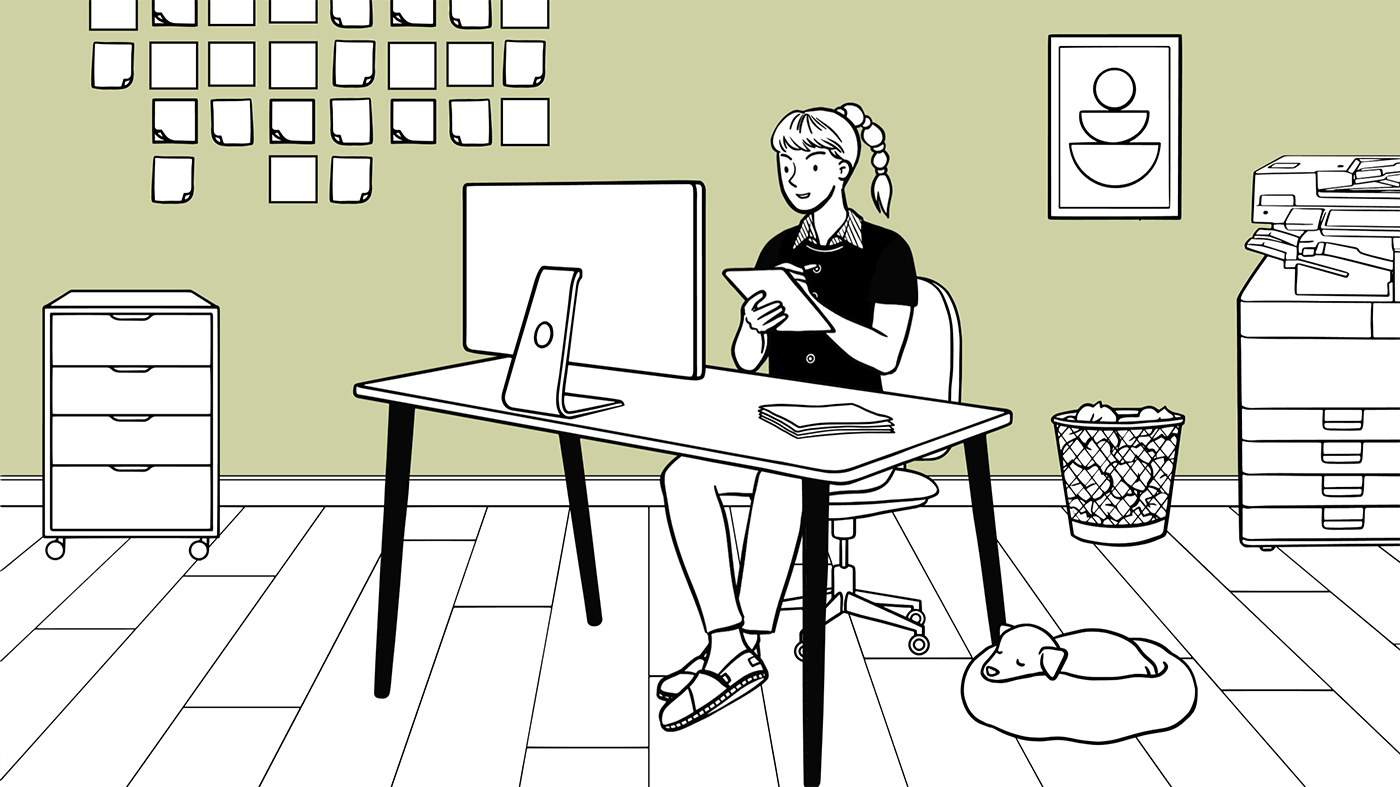
In a world advocating for AI, we advocate for humans
AI should enhance creativity, not replace it. StoryTribe empowers humans to create more, keeping art and storytelling in our hands.
Yunmie & Joe
StoryTribe Team
Storyboarding is essential for visualising ideas, but few tools adequately cover all the key aspects required for a seamless experience. Based on our research with 330 participants from 54 countries, we identified common pain points and unmet needs in existing solutions. And, with this insight, we developed a new solution tailored to address these challenges.

Storyboarding is a crucial step in the early stages of building stories. Its low-fidelity form allows for easy edits and collaboration, without overinvesting in the details of a complicated graphical style. This flexibility enables storytellers to focus on the narrative rather than the aesthetics of the visuals.
Effective visual storytelling depends on three essential elements: characters, context, and timeline. These elements help structure and shape the story. However, our research shows there are gaps in the market, as many tools don’t fully meet these needs, making the process harder than it should be.
Characters (Players)
Characters form the backbone of any storyboard, representing the people or figures driving the narrative. But the process of manually drawing and customising characters is complex and labor-intensive, especially for those without drawing skills. There aren't many tools on the market that provide a consistent, professional set of characters in a range of contexts, forcing users to hand-draw them or even hire a professional illustrator.
Context (Backgrounds & Props)
Bringing a story to life requires setting the stage. In storyboarding, this is done through an effective use of backgrounds and relevant props in the scene. Many online tools offer a variety of assets, but their styles are often inconsistent, making it hard to create a cohesive story. Users frequently find themselves hunting for assets across different platforms, leading to a disjointed and inefficient process.
Timeline (Layout & Sequence)
Sequencing events across frames is key to creating a cohesive narrative. While some tools handle this well, they are often not optimised for storytelling and need UX improvements.

Although some tools on the market support all three aspects of storyboarding — such as StoryboardThat, Powtoon, Pixton, and Previs Pro — very few (less than 3% of storytellers from our research with 330 participants) relied on existing storyboarding tools.
The most commonly used tools, surprisingly, were Canva, Procreate, and Photoshop — none of which are optimised for storyboarding. And the majority of storytellers revealed that they switch between several tools when creating storyboards.
Here's a typical scenario: A creator might hand-draw characters, scan and edit them in Photoshop, search for props and backgrounds on Freepik, and then compile everything on Google Slides for sequencing and reordering.
When we asked why users were unsatisfied with current solutions, they highlighted several key issues:

StoryTribe was designed to fill this market gap, addressing all the essential user needs in one place. By focusing on simplicity and usability, we offer an online storyboard maker that makes it easy for anyone to visualise their ideas without the need for drawing skills or switching between multiple tools.

Effective storyboarding relies on key aspects like characters, context, and timeline to build engaging narratives. However, many existing tools fall short in providing all of these features, especially in a seamless and user-friendly way. With the lack of professional visuals and overly complex features, users often find themselves switching between multiple tools and struggling to manage the process.
StoryTribe was built to address these gaps by offering an all-in-one platform that simplifies storyboarding without compromising on quality. By understanding your needs and the shortcomings of current tools, StoryTribe delivers an intuitive, effective solution for storytellers everywhere.

AI should enhance creativity, not replace it. StoryTribe empowers humans to create more, keeping art and storytelling in our hands.
Yunmie & Joe
StoryTribe Team

In a world where attention spans are shrinking and visuals dominate our screens, the right technique for visual communication has become more crucial. Here’s why StoryTribe aims to redefine how we share and understand ideas.
Yunmie Kim
Multimedia Specialist

In this blog, I'll talk about some common problems people experience when using AI to generate visual content, and how a different approach could solve these problems.
Yunmie Kim
Multimedia Specialist